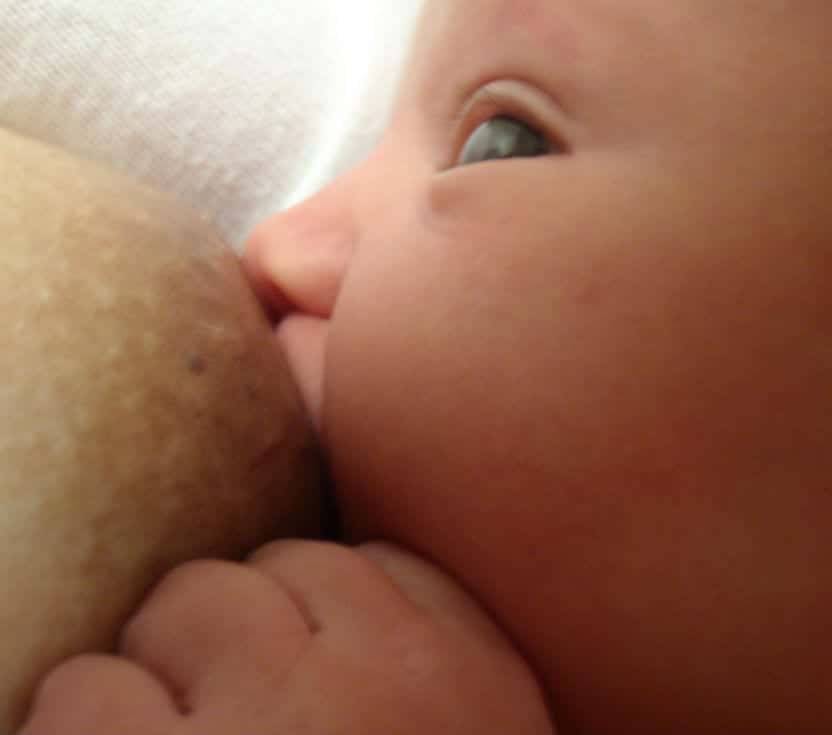
On many occasions it is believed that the newborn is unable to perform movements in response to a stimulus. Nothing is further from reality. The Newborn has a series of reflexes that try to ensure its survival in the first months of life, in which our baby will depend, for all its vital functions, on the help of an adult.
What are reflections?
Although when hearing about reflexes, we all imagine ourselves sitting on a gurney with a doctor hitting our knee with a small rubber hammer, the Newborn's primary or primitive reflexes have nothing to do with it.
A reflex is a muscular reaction that happens automatically in response to a stimulus.
The primitive reflexes of the Newborn originate in the lower or primitive parts of the central nervous system.
At the moment of birth, the higher centers of the central nervous system, which are the areas that allow voluntary movement, are not fully developed. Its development will be complete once the baby is born.
For this reason, the primitive reflexes of movement predominate in the first months of life.
The presence, intensity and normality of these reflexes is a sign of correct functioning and development of our baby's nervous system.

Do they have any function?
The primitive reflexes of the Newborn have an important survival function.
the features most important of the reflections are:
- Survival: breathing, swallowing, rotation and swimming
- Protection: blink, retreat
- Nutritive and stress reducing function: suction
- Survival in the past, although without current utility: Moro reflex, hug
- Establish interaction with the environment: rotation, suction, grip
- No clear function: Babinski

Main reflexes
When a baby is born it is essential to carry out a very complete examination, including these primitive reflexes, to correctly assess its neurological status.
Suction reflex
If we put a finger in the baby's mouth, he will catch it with his tongue against his palate and suck. This is one of the basic reflexes for the survival of our baby.
Asymmetric tonic neck reflex
With the child relaxed, lying on his back, the head is turned to one side. The arm at which the baby is looking is extended away from the body with the hand partially open, while the arm on the opposite side is flexed and the fist is tightly clenched. If we change the direction of the child's face, the position is also reversed.
Galant's reflex
Also called "bowing of the trunk". It occurs when with the baby face down, we caress or tap along the spine. The baby will then rotate his hips to the side of the stimulus in a "dancing" motion.
Search reflection
When we gently touch the baby's cheek, he will turn his head towards the cheek that we have touched him, with his mouth open. During breastfeeding, if we touch the cheek with the breast, we get the baby to open his mouth and direct it towards the nipple, ready to suck.
Babinski reflex
By gently running your finger across the sole of the baby's foot, From heel to big toe, the baby raises the toes and turns the foot inward.
Pressure reflex
With the baby's hand open, if you put your finger in the center of his hand, the baby will close it and grab your finger. If you try to remove the finger, the baby will squeeze your finger harder.
Babies have more pressure than we think. The pediatrician will stimulate both hands and when the baby is holding on to his fingers will try to lift him.
And it will almost certainly succeed.
Gait reflex
If we hold the baby vertically and make his feet touch a firm surface, he will take a few steps.
Moro reflex
We hold the baby on his back, with our hand under his back and simulate that we release him, causing his head to drop slightly, the baby will startle and extend both arms over the head. He will even arch his back and may cry.

Are the reflections always maintained?
No. As the baby grows and his brain develops, the areas that control voluntary movements become more important and the primitive reflexes tend to disappear.
When these reflections last too long it can be a sign that something is not quite right.
Asymmetric tonic neck reflex: Disappears after 6 months.
Galant's reflex: Disappears after 4 months.
Search reflex: Lasts between 3 or 4 months.
Babinski reflex: Lasts between 6 months and 2 years.
Pressure reflex: Lasts 6 months.
Gait reflex: Lasts 1 month.
Moro reflex: Lasts 4 months.
What information about the reflexes of a newborn Nati! Some of them I didn't even know and I'm a mother, it's a whole world, right?
Thanks Macarena. The truth is that it is a world .. And a good neurological examination in the first hours of life is so important!